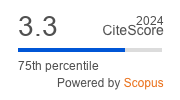Article | Open Access
Citizen Participation in Healthy City Making: An Analysis of Infrastructural Work in a Low‐Income City Area
| Views: | 2071 | | | Downloads: | 2087 |
Abstract: Despite a strong participatory discourse on the healthy city movement, researchers and activists indicate that low‐income groups and city areas often are excluded from participatory urban development and do not benefit from healthy city policies. To better understand the challenges that citizens who promote a healthy urban environment in low‐income areas face, we analyzed the infrastructural work of a citizens’ initiative. We focused on their building of a socio‐material infrastructure in an empty park surrounded by neighborhoods the municipality and other organizations classified as problematic in multiple ways. The infrastructural work consisted of experiments to attract new publics; regular work to revive a neglected garden; and negotiations with the municipality about new trees, natural play elements, and other additions to the park. However, residents’ work was thwarted by institutional control over the neighborhood public and by unreliable bureaucratic interactions that resulted in endless waiting, adaptations, and failures. In this setting, citizens adjusted their infrastructural work by establishing new alliances and engaging in “garden diplomacy” to maintain constructive relationships and a hopeful perspective. The work citizens do to make new local publics should be acknowledged. Moreover, institutional obduracy and bureaucratic ambiguities form a hostile environment for citizen participation. We characterize this hostile environment as shaped by a “residual realism” that reproduces problem neighborhoods. We end with our contribution to a co‐constructionist approach to public participation.
Keywords: citizen participation; inequality; infrastructural work; neighborhood health; neighborhood public; socio‐material infrastructure; urban commons; urban green zones; urban health
Published:
© Mare Knibbe, Sanne Raap, Klasien Horstman. This is an open access article distributed under the terms of the Creative Commons Attribution 4.0 license (http://creativecommons.org/licenses/by/4.0), which permits any use, distribution, and reproduction of the work without further permission provided the original author(s) and source are credited.


